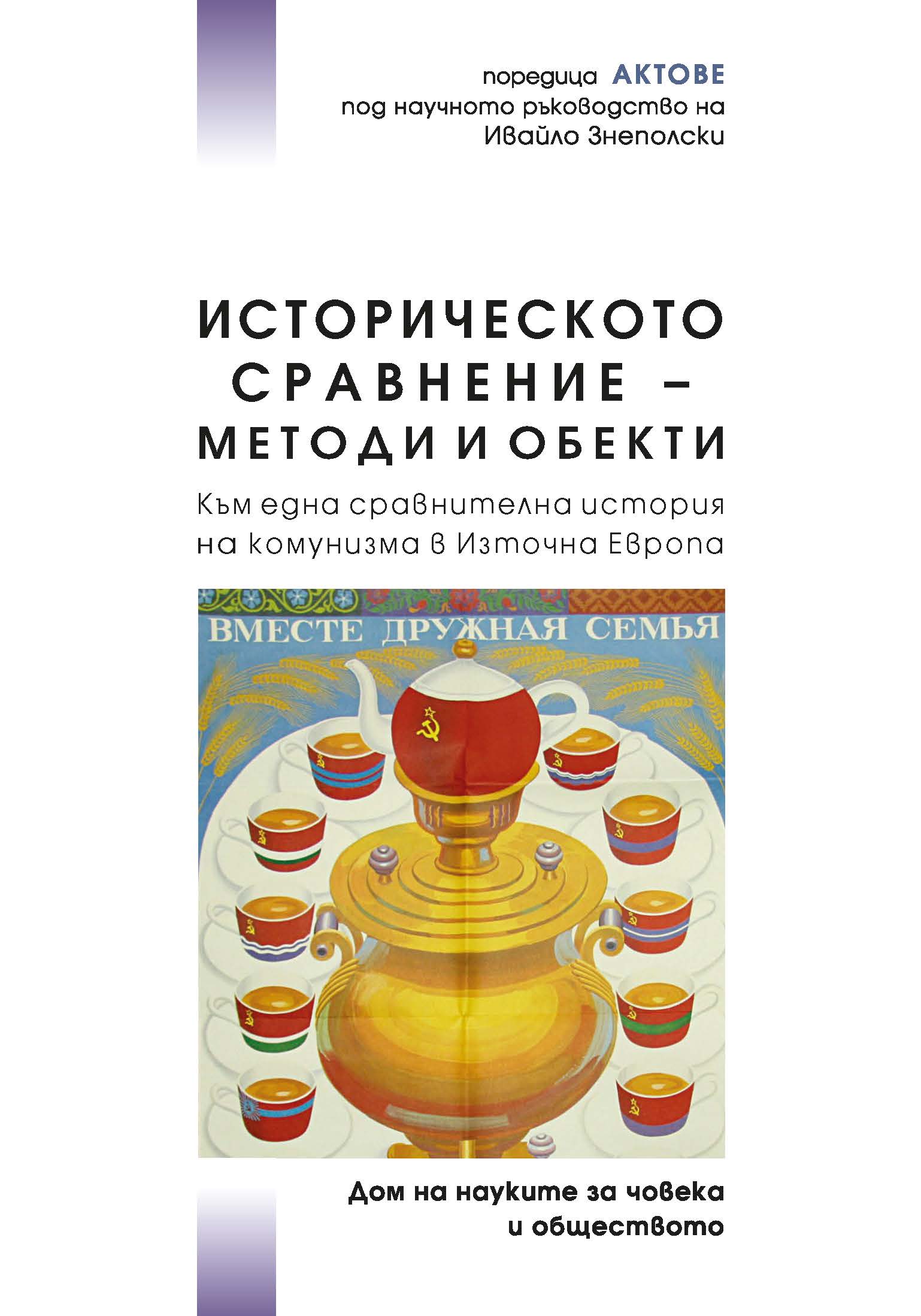
We kindly inform you that, as long as the subject affiliation of our 300.000+ articles is in progress, you might get unsufficient or no results on your third level or second level search. In this case, please broaden your search criteria.



In this paper we propose to further examine the possibilities that the late migrations of the 11th – 13thcenturies induced periods of growth and decline of agrarian settlements, but also the intensifications of trade and communications in the Eastern Carpathian area. The rhythm and intensity of the invasions are indicative of the reinforcement of the tribal confederation in southern Moldavia and in Wallachia, as a result of the gradual migration of Turkic peoples from North Pontic area to the west.It is possible that extra-Carpathian territories played the role of buffer zones between the nomads and the Christian states. The function of buffer zones was to reduce the likelihood of conflict, but these regions also feature an opportunity for peaceful exchange, and so they may develop into centers of trade.During the 11th – 13th centuries, the local communities of Moldavia had the characteristics of a sedentary and rural society, bonded to its traditional occupations, agriculture, and stock breeding, completed by artisan occupations. Given the favorable environment, this economic profile was sufficient for subsistence and could occasionally produce a surplus for exchange.This reexamination of the nomads’ way of life and of their influence on agrarian communities suggests that there was much more than a just interaction between the civilizations of East and West. Extreme climatic and geographical conditions repeatedly made Central Asian peoples develop modes of subsistence and institutional structures that had huge consequences for world history.New sources continue to appear and so we hope to be able to rule out some explanations and find support for others. In order to test the explanations for the relation between sedentary/farmer and nomad / warrior / conqueror we need quantitative data with good temporal resolution over the relevant time period and in the relevant regions for settlement, climate change, epidemic diseases, migrations, trade, and warfare.
More...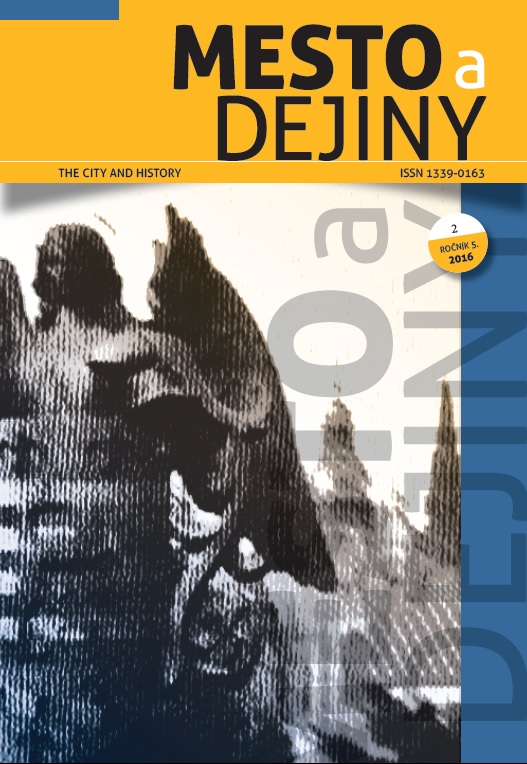
In the article the attention is paid to one of the scientific fields which contributed to the mature discipline of urban planning in the Polish territories. Theoreticians (and practitioners as well) of public hygiene were much aware of the urban problems, which were conspicuous especially in the cities of the so called Russian Poland, misruled in many respects by the Tsarist authorities. More and more detailed proposals and instructions how to improve the sanitary condition in e.g. Warsaw, Lviv, Cracow and Poznan, cities belonging to Russian, Austria-Hungary and Germany at that time, made by physicians and sanitary engineers, paved the way to a new scientific field in its own right. Some conclusions made in these public debates were later adopted by other professionals who dealt with the urban spatial development (like urban planners), what helped to establish the Polish school of urban planning after 1916.
More...
Rural landscape and medieval communities have often been regarded as being mainly static, belonging to some “traditional” or unchanging past. This stereotype point of view can be rejected, by regarding the agriculture as a dynamic process, where the main roles were held by nature, rural landscape and ecological space and the individual with his concerns, feelings and experiences, permanently balancing between stability, change, resilience, crisis and innovation. The daily routine and the medieval man’s concern to provide food, structured its relationship with the environment, as well as inter-community relations. The knowledge regarding crops and plants, soils and climate were complemented by skills and experience in agriculture, metalwork and tool manufacture, all these being placed in a natural, anthropogenetic and socially distinct environment. The present study stands for an introduction to an intricate analysis of the medieval rural world of the Eastern Carpathian area. Such an article meets the necessity of an enlarged database, as it takes into consideration information provided by corroborating disparate and often anachronistic or confusing archaeological and historical data. Medieval rural research started quite late inRomania, in the second half of the 19th century, when a few studies were published by ethnologists, linguists, and agronomists. It was only towards the middle of the 20th century, when the rural areas started to be archaeologically investigated but without substance and consistency.In our country, elements of "everyday life" and agricultural space organization were briefly discussed, the research being tainted by the lack of historical sources (written sources and archaeological research). Our historical and archaeological data cannot be compared to the situation in other European countries and, moreover, what we have has not been exploited enough. In addition, such a topic requires the use of a very large range of information provided by several complementary fields of research, interdisciplinarity being instrumental in this case. Nowadays, topics related to human inter-relations, individual and communal mentality, food and culinary practices, hygiene, education, culture and religious practices, ordinary and eschatological fear, archaic landscape and the ecology of the daily medieval landscape, are a constant presence in European scientific circles and research programs. In many academic centers of Europe important monographic works and studies were published, on topics such as rural territory organization and structure of countryside communities, paleoclimatology, agricultural landscape and the ecology of rural settlements, commercial networks, and centers of production, culinary art, etc.
More...
In a recent article, Gh. A. Niculescu raises the question of the relation between culture-historical archaeology and the so-called “production of knowledge” on ethnic phenomena. He targets the works of Volker Bierbrauer, Sebastian Brather, and Florin Curta. At a closer examination, however, Niculescu’s paper is based on a distorted understanding of what culture history actually is, and on wrong assumptions about such fundamental concepts as ethnicity or (material culture) style. Besides flaws in this line of thinking, his paper reveals Niculescu’s dishonest citation practices, his efforts to create a straw man, and his weak credentials for assuming any critical position in terms of the “production” of archaeological literature in the culture-historical mode. Beyond rhetorical tricks and smearing tactics, Niculescu does not in fact advance any solution to the problem, and remains ambiguous, if not altogether confused about the role of “social sciences” in the archaeology of (medieval) ethnicity.
More...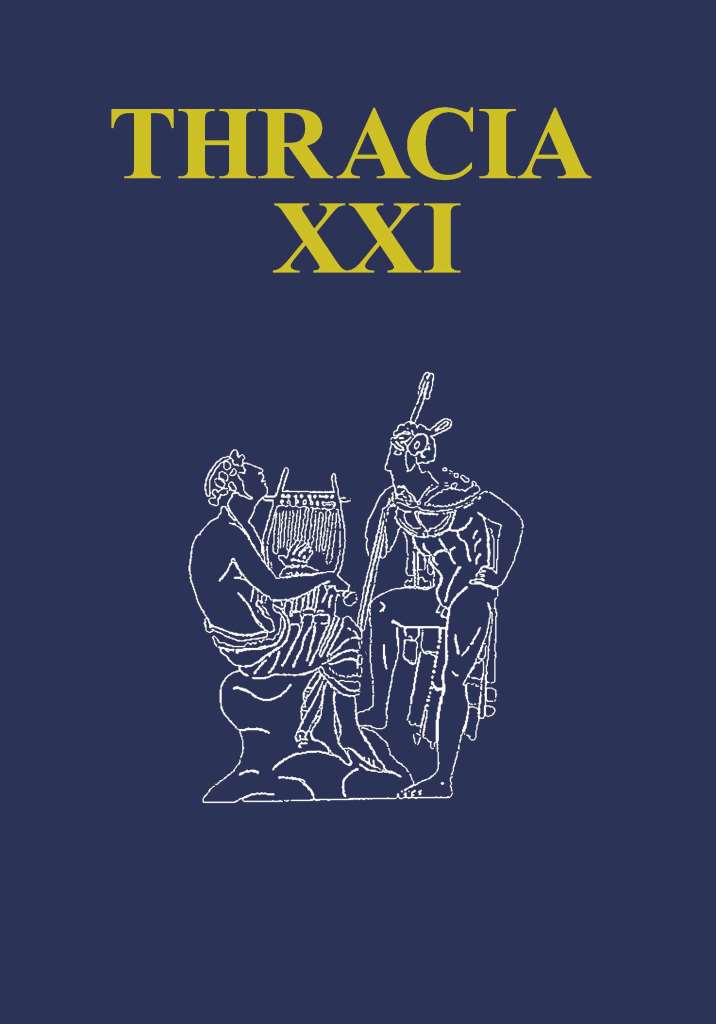
The present work is based on materials from archaeological surveys, rescue and drilling excavations, as well as on accidental finds kept in the depository of the Regional Historical Museum of Pernik. To date, there is no comprehensively and methodologically investigated archaeological site dated to the Early Iron Age. The finds can be used for mapping the places inhabited during that period, and for identifying their topography. According to the duration of the habitation, the sites can be divided into three groups: – multi-layer sites inhabited prior to and after that time; – sites that emerged during the Early Iron Age, whose habitation (usually intermittent) continued during subsequent periods as well; – places inhabited only during the Early Iron Age. The latter type of sites is rare and life in them did not continue due to deterioration of the environment. There are no known sites whose habitation started earlier and ended during the Early Iron Age. Most of the finds originate from regions with prolonged topographic continuity, but none of the studies has revealed a culture layer or ruins of massive buildings. Most of the ceramic material is of poor quality, fired at low temperature – of the type maintained in a hearth. The number of sites known so far is 91. Most of them spread over a large area, but without evidence of a culture layer. One possible explanation could be sought in the absence of sedentary life due to economic reasons.
More...
The tumulus is 40 m in diameter and 2 m high. The grave pit (4.10/4.20 m × 2.10/2.30 m) is located approximately in the central part of the embankment, at a depth of about 1.90/2.00 m from the ancient terrain. The construction is panelled and covered with oak beams. When the earth was removed from the grave pit, a spindle whorl, a fragmented jug, several bones and fragments of clay vessels were found. The burial rite was inhumation. The skeleton with north – south orientation and with head to the north is 1.57 m long. The legs are straight and slightly closer to one another at the feet. The arms are bent at the elbows, the left arm is lying on the abdomen, and the right one – on the pelvis. Traces of timber are preserved below the skeleton and to the east of it (probably wooden planks placed below the body). The anthropological analysis demonstrates that the skeleton was of a woman aged 35-40 years. The grave goods are relatively rich. A small iron tube and two silver omega-shaped pendants were found next to the skull. A bronze Thracian-type fibula was unearthed on the left part of the ribs and a small iron knife – to the southeast of the skeleton. Four iron pellets with apertures and an iron spearhead were also found to the east of the buried woman. After the grave pit was piled with earth, one or two pits were dug and filled in its north-eastern part. Their filler is brown earth with numerous small pieces of clay turned into brick, ash and coals, several uncharacteristic ceramic fragments and animal bones. Other commemoration acts have been performed predominantly in the northern part of the tumulus, where two “platforms” have been documented. Based on the finds, the actual burial in the tumulus can be dated to the late 5th – early 4th century BC.
More...
Constructing identities inevitably generates otherness. In ancient Greek and in Old-Attic culture, otherness is usually deliberately inscribed in formal ethnic-geographic frameworks by opposing the Greek-speaking population (i.е., those with Hellenic culture-behaviour = paideia) to the barbarians who did not know Greek, i.e., the logos not familiar with democracy. That model is usually reduced to identifying the problems connected with the image of the Other (in ethnic or religious terms) in the effort of gaining further self-awareness through better knowledge of the neighbours. However, the otherness culture is also a process with which a community/culture excludes certain people(s) on account of their difference. The paper examines the issues of the type of model of the relation-interpretation of the ancient Thracian world and the Thracians applied by classical Old-Attic culture, and accordingly by the Old-Attic theatre in constructing the polis identity of the Athenian citizens, and whether that model fits the general opposition Hellenism – barbarianism. The analysis of the dramaturgical material is focused on the artistic, dramaturgical and literary efforts to construct Otherness through Ancient Thrace and the ancient Thracian elements in Old-Attic culture. A conclusion is proposed that Ancient Thrace, transformed and reduced to dramaturgical and cultural topos, was interpolated in the Old-Attic theatre so as to materialise the system of otherness and to be modelled as a paradigm of otherness, but also as an effort to overcome it by constructing models of increasing closeness.
More...
The study of Thracian toponymy with a view to chronology has different aspects. The history of each source gives a more precise picture of the chronology of the attesting of the data. Tracing the chronology of emergence is of greater significance both in linguistic and in historical plan. Owing to the areal positioning of toponymic isoglosses or isoglosses of toponymic elements, the conclusion reached in the study concerns the chronology of the emergence of groups of toponyms united by common characteristics. Tracing their propagation leads to the conclusion that the oldest layer of Thracian toponymy has lexical and word-forming parallels with the pre-Greek toponymy in the southern and western parts of the Balkan Peninsula and in Asia Minor. There is a newer layer that demonstrates lexical parallels only within the Thracian linguistic space. It comprises the settlement names with two roots and with second components recurring repeatedly, whose dissemination occurred successively throughout the first millennium BC. On the whole, the models for the formation of the Thracian toponymy were completed by the end of the first millennium BC.
More...
The mismatch between the human paleoanthropological ‘tree’ and the paleo-cognitive ‘ladder’ has been recently attributed to epistemological biases affecting the mainstream narratives on cognitive evolution. The present paper takes issue with such a perspective and argues for a rather continuous cognitive development along the human lineage, as documented archaeologically by the early emergence of a ‘familiar’ human mind and by the cumulative features of Pleistocene cultural evolution in general. These facts seriously question the paleo-cognitive relevance of the acknowledged branchy taxonomy and point strongly towards a more anagenetic view on human biological evolution. Moreover, as the prerequisites for complex behavior and a consistent ability for cultural transmission were already among the capacities of the Homo erectus grade, the scope of further major cognitive changes, as usually invoked in connection to the emergence of Homo sapiens sapiens, appears limited.
More...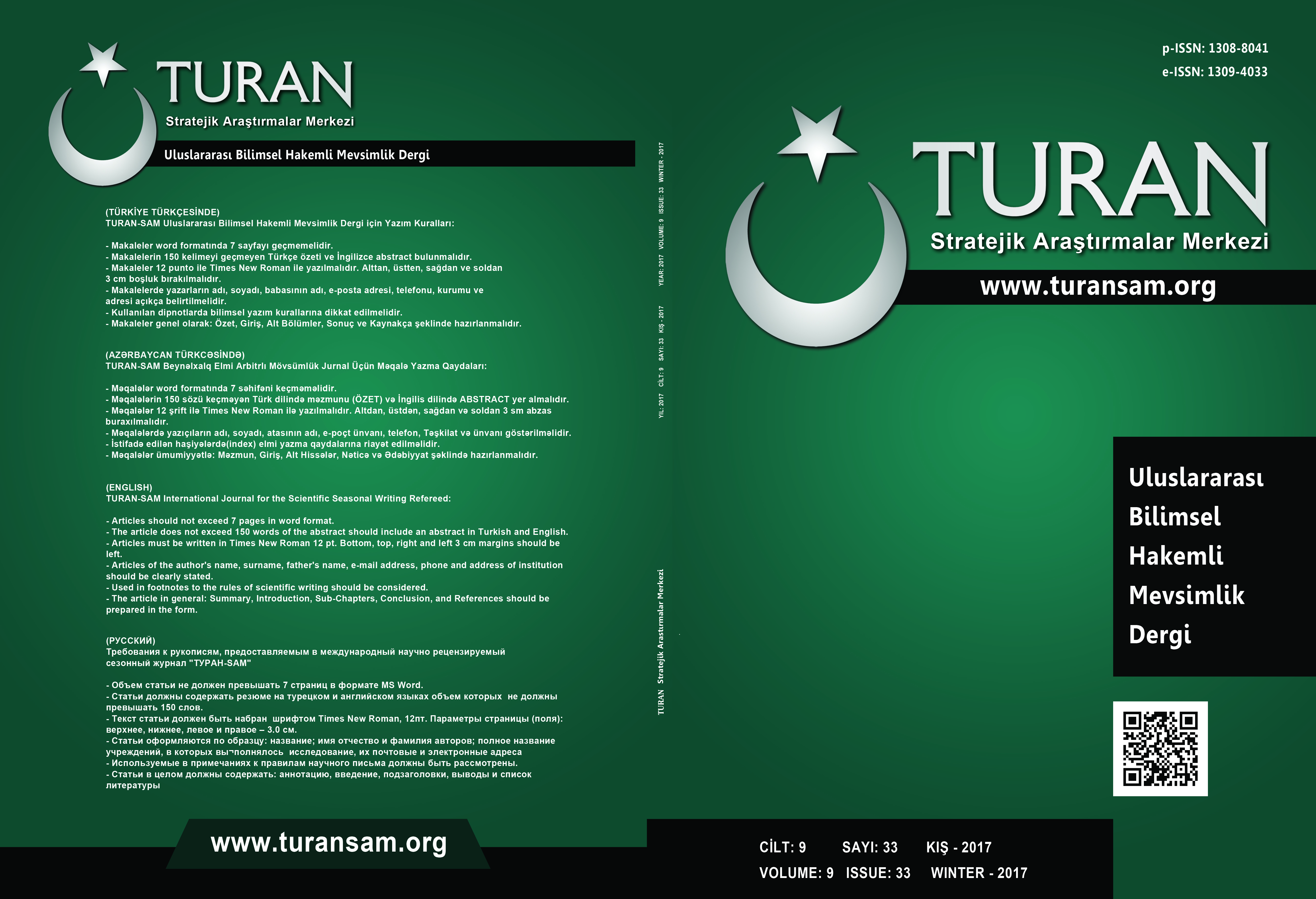
It seems like it is an obligation to examine some motifs in order to understand the socio-psychological viewpoint of Anatolian culture. Within this viewpoint, the examination of certain people who has affected Anatolian people sociologically becomes important. Hacı Bektaş-ı Veli is the most important person among this certain people. The examination of this person’s life and thought in terms of humanistic approach will ease to find answers for some questions related to sociology and social structure in Anatolia. The main purpose of this study which examines Hacı Bektaş-ı Veli’s thought structure in terms of humanism traces based on symbolic approach is to study Veli’s life with a socio-psycologic viewpoint.The method of this study is based on literature search of Hacı Bektaş-ı Veli’s humanistic thought traces and the interpretation of these thoughts with symbols. The reason of this study is to show how much importance Hacı Bektaş-ı Veli attaches to human life and individual values.
More...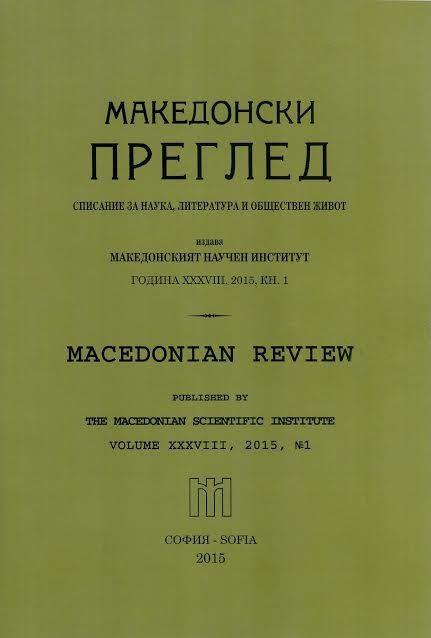
The study is dedicated to the historical development of Old Bulgarian non-prefigated verbs for motion that come into opposition defined-motor ~ non-defined-motor verbs.
More...


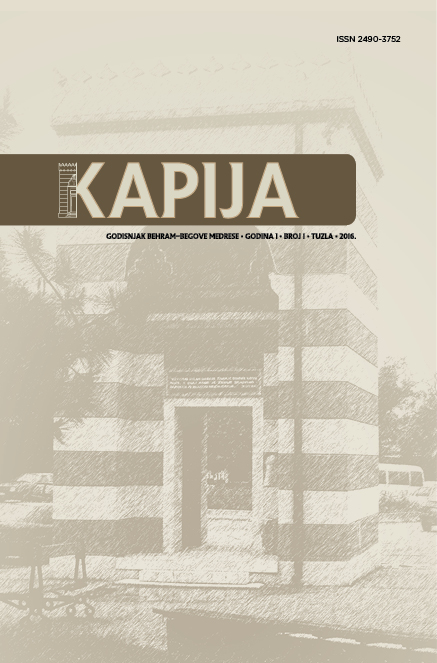
Muslim woman, education, Islamic sources, the Muslim practice, European trends, reformist thought, ulama (Islamic authorities), female students, madrasa, Islamic community, university.This work elaborates the question of the relationship of the Bosniak people towards the education of their female population, in the period of the arrival of Austria-Hungary in the areas of Bosnia and Herzegovina to this day. It observes the issue of Islamic attitude towards the education of women, as well as the practice of Muslims by the same issue. The work focuses on the division of Bosniaks to those who are against the education of Muslim women in European educational institutions, to those who fully and without any restrictions support their entry into new educational trends, and to those who are neutral and who hold the neutral stand. The attitude of the Communist government towards the education of Muslim female youth is also described in this work. The number of Muslim women who have completed high school or obtained a university degree will be much smaller than the number of men of the same age, which will be documented through researches outlined in this work. It is noted in the work that the interpretation of Islam and Islamic principles by the reformist Islamic authorities (ulama) in Bosnia and Herzegovina had the important role in changing the Bosniaks’ attitude towards this issue, with all other circumstances.
More...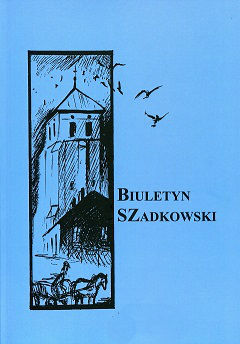
First churchyards were founded around 5th–6th century AD near the temples where in crypts were the remains of saints. Over time, these cemeteries were built near every church. Burials at the churchyards were abandoned in the 18th century because of numerous epidemics that had sources at these cemeteries. People started to bury their dead at cemeteries outside the cities. The churchyard at the Church of Assumption of the Blessed Virgin Mary and Saint James the Apostle in Szadek was founded in the Middle Ages and continued to be used during the next centuries. It seems that the cemetery was used until the second half of the 19th century and even at the beginning of the 20th century. Currently, beside the church are seven tombstones and gravestones, which are the remains of the old churchyard. The preserved tombstones and gravestones belonged to: Józef Formański and Helena Formańska, Wiktoria Rolińska, Józefa Maliszewska, Józef Kozieł, Marceli and Cecylia Kozłowski, Teodora Skupińska oraz Jan Kiełkiewicz. These people lived in Szadek and the surrounding villages and were buried at the end of the 19th – beginning of 20th century.
More...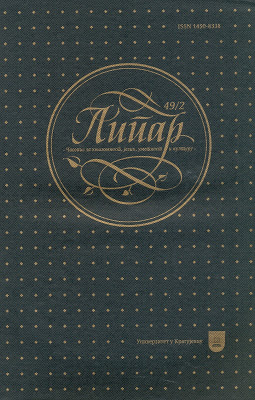
This essay presents the work of Edward Palmer Thompson, British historian whose involvement with history is inseparable from his study of literature (of romantic poets above all) which records fragmented personal stories of the oppressed (Blake would say ‘minute Particulars’) that official history of the winners ignores, silences and excludes from active participation in the challenges we face today. At the moment when the so called New World Order is trying to impose itself as an option without alternatives, Thompson’s deep involvement with the history of ideas is hugely important. His concern with traditions that are alternative to the dominant discourse of the world order currently in power, keeps these traditions alive and makes it possible for them to re-enter the battle of ideas that will shape the twentyfirst century. That is the reason why his studies of history and culture deserves to be presented to our public, and better known.
More...